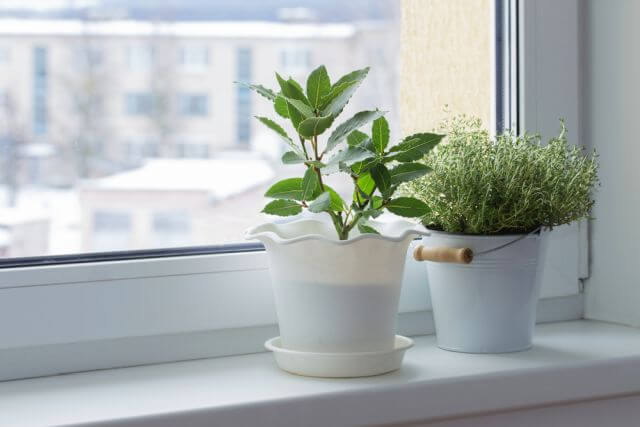My wife loves to cook using culinary herbs, and even though she dries her herbs to have a substantial supply, nothing beats the freshly picked herbs. She keeps an indoor herb garden throughout the colder months, and I’ve decided to share her recipe for growing herbs successfully during the winter.
Culinary herbs are the perfect additional ingredient to any meal, and they can turn even the blandest food you can think of into a tasty dish. They are packed with antioxidants and are generally easy to cultivate.
If you can’t grow herbs outside all year long, it’s worth exploring your options for growing these culinary complements indoors. While some plants require a certain degree of maintenance and do not adapt well to indoor conditions, there are a few that almost anyone can grow.
The basics for your indoor herb garden
- Light – is an essential requirement for growing healthy plants, but when you grow your plants indoors, you should ensure your plants have sufficient light, especially in winter. In general, your south or southwester facing window should be able to provide enough light for your plants to grow. The minimum direct light your herbs need is six to eight hours. If your window isn’t exposed to enough light during the day, you will need to provide lights for your plants using fluorescent lighting. Sometimes two 40-watt cool white fluorescent bulbs are enough to provide ample fluorescent light for the plants. However, the trick here is to learn how much additional light your herbs need. For example, if your window gets only six hours of natural light per day, you will need to replace the missing hours using fluorescent light. For an hour of natural light, you will have to provide two hours of artificial light. This means that you will need four additional hours of fluorescent light for the remaining two hours. Also, positioning the artificial light source should be done by considering that plants should be no farther than 15 inches from the bulbs and no closer than 6 inches. Depending on how much exposure the plants get from your light source, you might not need to rotate the pots. However, if your herbs grow with the help of only natural light, I recommend rotating the pots every three to four days so that all leaves receive enough light exposure.
- Soil – Your culinary herbs require well-drained soil to grow and thrive. It becomes mandatory to make sure the roots of the plants do not become water-logged. While some folks prefer to buy an indoor potting mix, my wife likes to prepare the soil herself to provide the herbs with proper drainage. She goes to the garden supply center, buys sand, perlite, peat moss, and organic potting soil, and mixes these ingredients equally. Also, I recommend avoiding buying plastic pots and sticking with porous clay pots since these promote better drainage and circulation.
- Water – The watering needs…

